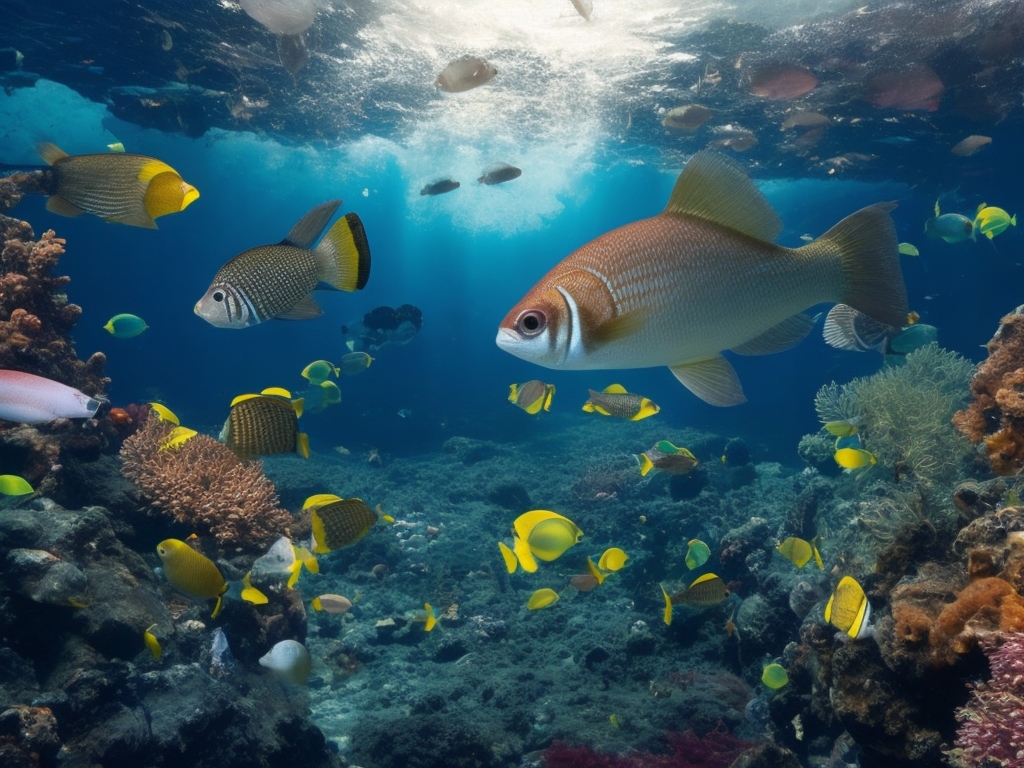Why is Your Fish Dying After a Water Change
You’re puzzled. Your fish are dying after water changes and you don’t know why. You’re not alone; it’s a common issue for many aquarists.
Sudden shifts in water parameters, temperature changes, and bacterial loss can be lethal. Let’s dive into why this happens and how you can prevent it.
With the right knowledge and practices, you’ll maintain a thriving aquatic environment. Let’s unravel the mystery of fish mortality post water change.
Understanding Why Fish Die After a Water Change

You must understand that water quality in an aquarium plays a crucial role in your fish’s survival.
Newly added water can introduce potential harmful elements, resulting in a shock to the aqua ecosystem and stressing the fish.
In the following section, we’ll explore these factors in detail, to help you prevent unnecessary fish deaths after water changes.
Importance of Water Quality in an Aquarium
Let’s delve into the importance of water quality in an aquarium, understanding why fish often die after a water change.
Poor water quality can stress aquarium fish drastically and weaken their immune system. When you change the aquarium water, you may unintentionally cause sudden changes in water chemistry. This shocks the fish, leading to fatalities.
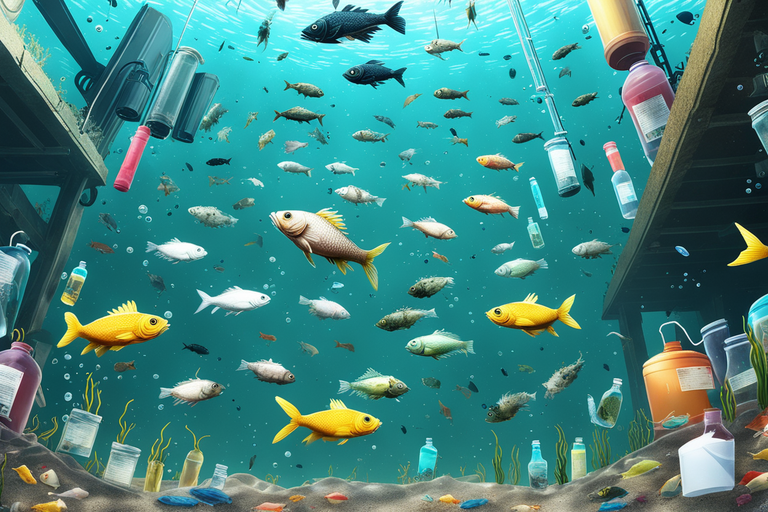
Therefore, it’s crucial to regularly test the water using a water testing kit. Monitoring water parameters like pH, temperature, and ammonia levels help maintain a healthy fish tank.
If your fish die after a water change, it’s often due to poor water quality or abrupt changes in water conditions.
Regularly monitoring and adjusting your aquarium’s water quality can significantly enhance your fish’s health and lifespan.
Potential Harmful Elements in New Water
In understanding why fish die after a water change, it’s crucial to consider potential harmful elements in new water, as these can introduce unexpected toxicity into your aquarium’s ecosystem. Tap water contains elements that are toxic to fish, such as chlorine and heavy metals. Using a water conditioner can help neutralize these toxins.
To maintain proper water chemistry, observe the following steps:
- Conduct regular tests on water parameters like pH, hardness, and temperature.
- Adjust these parameters if necessary, using appropriate aquarium products.
- Implement a proper water change routine.
- Use tap water that has been treated with a water conditioner.
Sudden Changes That Stress the Fish
Almost all fish species can’t handle sudden changes in their environment, which often cause severe stress and can lead to their premature death. Sudden changes in water temperature, pH, or other parameters can shock your fish, causing stress that may result in your fish dying after a water change.
| Cause of Stress | Symptoms | Prevention |
|---|---|---|
| Water temperature shift | Rapid breathing, lethargy | Gradual temperature adjustment |
| pH change | Loss of color, erratic swimming | Test water regularly |
| Toxins in water | Reddened gills, loss of appetite | Use water conditioner |
How to perform Proper Water Change
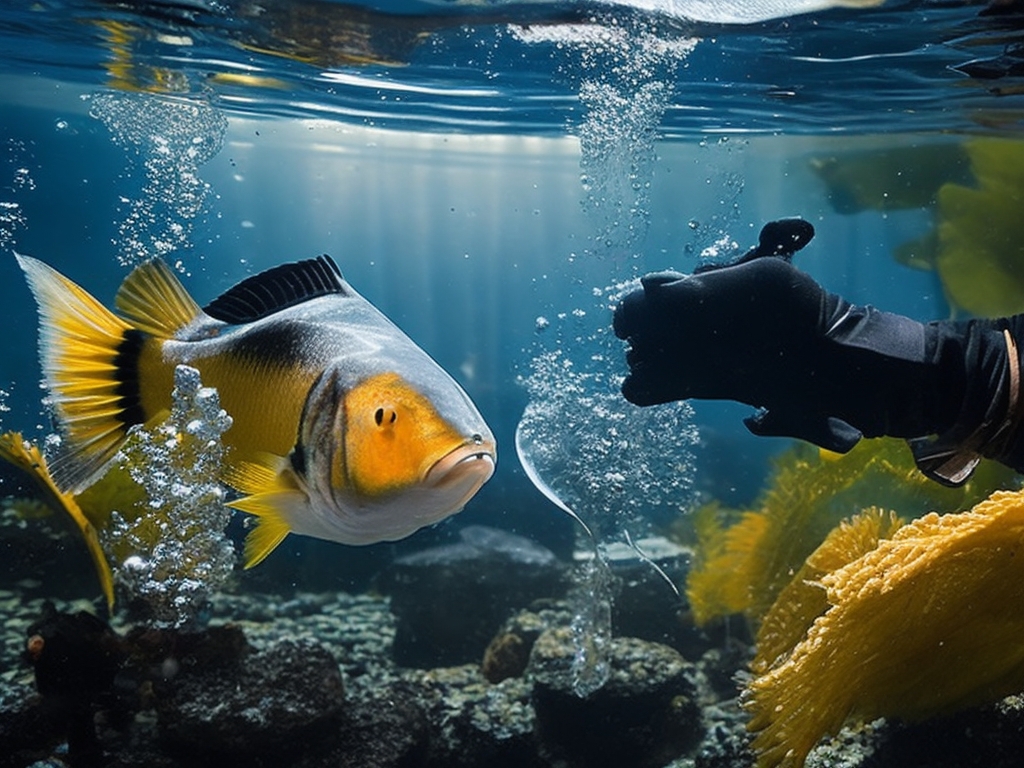
To ensure the health of your fish when changing water, it’s imperative to understand and apply proper procedures.
First, testing the current aquarium water allows you to gauge the necessary adjustments for the new water.
Preparing the new water appropriately and executing the actual water change correctly are equally vital steps in maintaining a safe and stable environment for your fish.
Testing the Aquarium Water
Before diving into the details of how you’ll perform a proper water change, it’s essential to understand the importance of testing the aquarium water, as this can play a significant role in preventing fish mortality.
When you check the water, you’re monitoring for changes in the tank’s environment that could be harmful to the fish. This includes testing for:
- Ammonia, nitrite, and nitrate levels – These can be deadly if they get too high.
- pH levels – A rapid change can cause stress for your fish.
This testing is crucial since poor water is one of the primary reasons fish die. Therefore, a water change is essential to maintain the new water parameters within the safe range for the fish in the tank.
Preparing the New Water
Understanding the intricate balance of your aquarium’s ecosystem is critical when you’re preparing to change the water. To begin, you’ll need clean water. Use a water conditioner during this process to eliminate harmful substances. It’s vital not to boil the water, as it can deplete its oxygen content.
Adjust the temperature of the water to match the old water in the tank. Let the water sit to achieve this, ensuring minimal shock to your fish. Once prepared, slowly add the new water to the tank, allowing your fish time to adjust.
| Steps for Water Change | Importance |
|---|---|
| Use water conditioner | Removes harmful substances |
| Don’t boil the water | Preserves oxygen content |
| Let water sit | Matches temperature to tank |
| Add water slowly | Minimizes fish stress |
| Monitor fish behavior | Ensures successful water change |
Performing the Actual Water Change
You’ve got to know the right steps when you’re performing the actual water change to maintain a healthy environment for your fish. The process of performing the water change begins with deciding whether a partial or massive water change is needed.
- Partial water change: This is a small water change that involves replacing about 10-15% of the tank water. Regular water changes of this kind help prevent fish from dying after water change due to shock.
- Massive water change: This involves a large water change, replacing up to 50% of the tank water. It’s necessary when there’s a major issue, but it can be risky if not done carefully.
Identifying Signs of Fish Stress and Illness After a Water Change
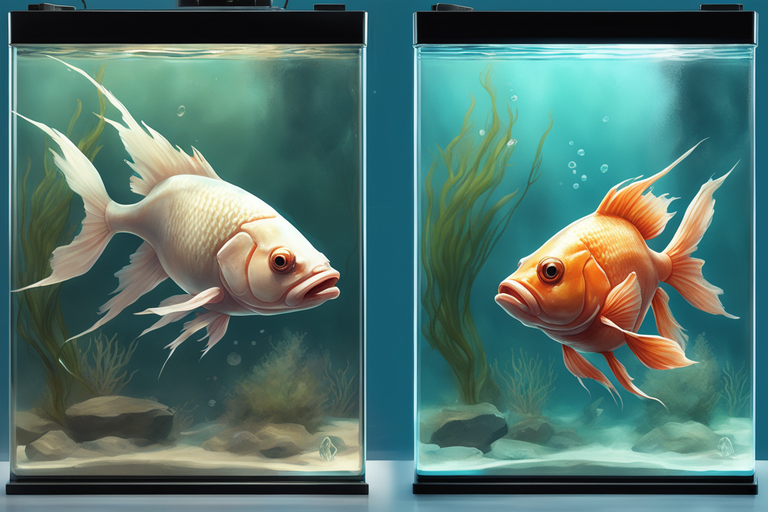
As you monitor your aquarium after a water change, it’s crucial to identify signs of fish stress and illness promptly.
Be vigilant for behavioral indicators like lethargy, loss of appetite, or erratic swimming.
Physical symptoms such as changes in color, visible injuries, or unusual growths also signal potential issues.
Behavioral Indicators
Often, you’ll notice changes in your fish’s behavior, like erratic swimming or staying at the bottom of the tank, as clear signs of stress or illness after a water change. These behavioral indicators can help you identify if a water change kill has occurred. Here are some signs to look out for:
- Erratic Swimming
- Sudden, uncontrolled movements
- Darting or spinning in the water
- Lethargy
- Staying at the bottom of the tank
- Lack of response to stimuli
Regularly change the water, but ensure it’s not too drastic to prevent fish death. If you observe a dying fish after a water change, act promptly to save it. Remember, understanding changes in water is key to preventing dead fish after a water change.
Physical Symptoms
Besides noticing behavioral changes, you’ll also need to look out for physical symptoms in your fish after a water change. As fish are cold-blooded, drastic temperature fluctuations can kill your fish. A swift change in water conditions may cause the fish to die from shock.
Symptoms include discoloration, injuries, or even death. To save a fish after water changes, monitor the water parameters meticulously. If you notice signs of stress or illness, act promptly to save dying fish.
It’s crucial to prevent your fish from dying due to water changes by ensuring gradual acclimatization. Remember, the primary objective is to maintain a stable environment, as any abrupt alteration could potentially kill the fish.
Preventative Measures to Keep Your Fish Safe During Water Changes
You can safeguard your fish during water changes through regular maintenance. Monitoring your tank environment closely allows you to maintain optimal conditions, thereby reducing stress on your fish.
Proper acclimation for new fish is also important. Educating yourself on specific fish needs will enable you to provide an environment that promotes their health and longevity. Understanding the unique needs of your fish species is crucial in ensuring their well-being.
Regular Maintenance and Monitoring
In light of the knowledge above, it’s crucial for you to adhere to regular maintenance and close monitoring as preventative measures during water changes to ensure your fish’s safety. Regular water changes are vital, but they must be performed correctly to prevent harm to the fish.
You should:
- Perform water changes periodically, not in large quantities, to keep the environment for your fish stable.
- Cleaning the bottom of the tank is necessary to remove fish waste, which can make your fish unhealthy.
- A water change is one method to keep your fish healthy but always monitor the water parameters to avoid any drastic change that may harm your fish.
Proper Acclimation for New Fish
When bringing in new fish, it’s crucial that you carefully acclimate them to the tank’s water conditions, and concurrently, quarantine them to prevent the spread of potential diseases.
The proper water acclimation process involves introducing them gradually to the new water parameters. Too much water change at once can shock your fish, so it’s better to do smaller, more frequent water changes.
Immediately after a water change, monitor your fish’s behavior for any signs of stress.
Always treat the new water without chlorine and match the temperature with that of the aquarium to keep the fish safe.
Educating Yourself on Fish Requirements
Arming yourself with knowledge about your fish’s specific needs and understanding how to properly change the water can significantly decrease the risk of losing your aquatic friends. Start by learning the percentage of water to change in their tank. Small water changes are less stressful for fish.
Next, understand how to aerate the water. Fish need oxygen, and aeration helps ensure that they get it. Here’s a quick guide on these steps:
Percentage of water to replace:
- Small tanks water: 15-20% weekly
- Larger tanks: 10-15% weekly
Aeration:
- Use an air pump or airstone
- Let the water sit before use
Using these description terms and understanding ‘h headers terms’ can make the process both more precise and less stressful for your fish.
How to save Dying Fish After Water Change
If you’re noticing signs of distress or illness in your fish following a water change, it’s crucial to act swiftly.
First, consider immediate first aid measures such as adjusting water parameters or adding conditioners.
Then, seek expert advice or consultation to better understand the situation and prevent future issues.
Immediate First Aid Measures
In the face of a crisis, you’ll need to act swiftly to save your fish after a water change by quickly executing immediate first aid measures. First, aerate the water to increase oxygenation. Low oxygen levels can cause fish to suffocate, so this step is critical.
Next, adjust the water parameters to optimal levels. This includes checking and adjusting the water’s pH levels and ensuring the water temperature is within the acceptable range for your fish species.

Remember, fish are highly sensitive creatures. They can easily get stressed by sudden changes. Thus, when you adjust these parameters, make sure to do it gradually. Quick changes can cause more harm than good.
In essence, act fast but remain calm. Focus on oxygenation and water parameters. Make gradual adjustments.
Consultation and Expert Advice
You’ll find that a little expert advice can go a long way, and it’s often crucial when trying to save a dying fish after a water change. Consulting with aquarium experts can provide valuable insights into why your fish may be struggling and how you can help. These experts have vast experience and knowledge in dealing with aquatic life and can guide you on how to adjust water parameters, manage temperature fluctuations, and maintain beneficial bacteria in your tank.
| Source of Advice | When to Consult | Outcome |
|---|---|---|
| Local Aquarium Experts | Unexplained fish behavior or death | Tailored advice based on your specific situation |
| Online Forums | General queries or doubts | Multiple perspectives from a wide user base |
| Fish Health Professionals | Severe or recurring fish illnesses | Professional diagnosis and treatment plan |
| Aquatic Life Books | Regular learning and updates | In-depth knowledge and understanding |
| Fish Keeping Courses | Beginners or upgrading skills | Structured learning and practical skills |
Conclusion and Final Tips
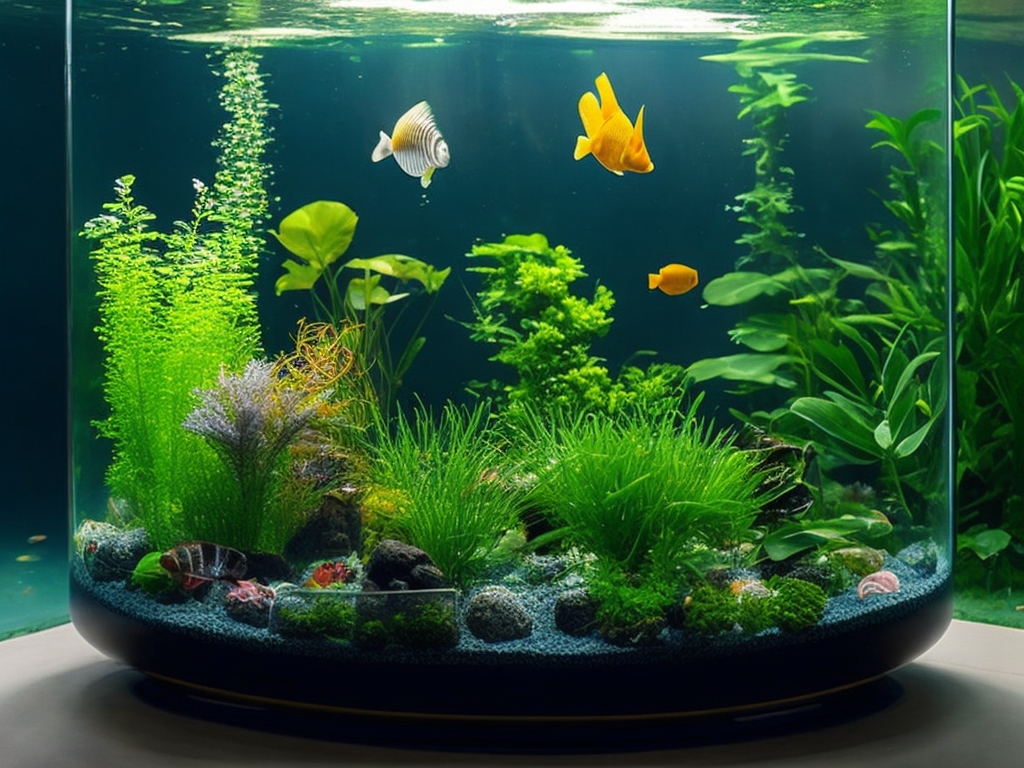
In conclusion, the vitality of maintaining consistent water quality in your aquarium can’t be overstated.
It’s not just about changing the water; it’s about understanding and managing the entire ecosystem within your tank.
Adopt a proactive approach, be observant, and remember that the well-being of your fish is a direct reflection of the water quality in your aquarium.
Understanding the Vitality of Consistent Water Quality
Maintaining consistent water quality isn’t just important, it’s vital for the survival and overall health of your fish. Negligence during water changes can lead to drastic shifts in water parameters, temperature, and the elimination of beneficial bacteria, causing immediate stress and potentially death.
Here are some tips for maintaining water quality:
- Regularly test water parameters:
- pH level
- Hardness
- Nitrate levels
- Perform consistent water changes:
- Weekly: 10-15%
- Monthly: one-third
Understanding and maintaining the delicate balance of your aquarium’s ecosystem will ensure your fish thrive. Remember, it’s not just about cleanliness, but the consistency and balance of water parameters that matter the most.
Adopting a Proactive Approach
Let’s adopt a proactive approach to ensure your fish’s survival and well-being by following these final tips. Consistent observation of your fish, combined with ongoing learning about their needs, is key to preventing issues related to water changes. Let’s break the tips down further:
| Observation | Learning | Prevention |
|---|---|---|
| Regularly monitor your fish’s behavior | Research the specific needs of your fish species | Perform water changes gradually |
| Check for signs of stress after water changes | Learn about water parameters and how to manage them | Use water conditioners to treat tap water |
| Observe the water’s clarity and smell | Stay informed about new aquarist practices | Schedule regular, not drastic, water changes |
Conclusion
In conclusion, water changes are vital but risky. They can lead to sudden shifts in water conditions, causing your fish stress or even death. By understanding the reasons, spotting signs of distress, and taking preventative measures, you can mitigate these risks.
And if your fish do fall ill, there are ways to save them. Continue learning and adapting your practices to ensure a healthy aquatic environment for your fish.

